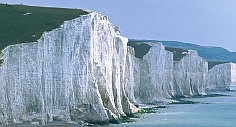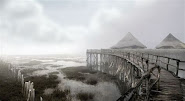10 .The Medieval Countryside

In the last post, I described the settlement of the region after the Romans left. I will now turn back to my main focus, which is the creation of our rural landscape. This is very general; there is more local detail on the posts on my bike tours in the regional countryside. Bike Tours Landscape of Northern Home Counties A useful but very crude simplification is that there are two 'typical' types of landscape hereabouts. The predominant landscape today, particularly in the clay lowlands and rolling countryside to the north of London, shown in the lighter shade in the map above, is a 'Planned Countryside' of large and often rectangular arable fields served by a loose grid of roads. In many places, this supplanted a medieval layout known as a 'Champion' landscape, which was based on open, collectively farmed fields. The other is the 'Ancient Countryside', or 'Engliscan Gesithas' if you fancy a bit of linguistic cosplay....

